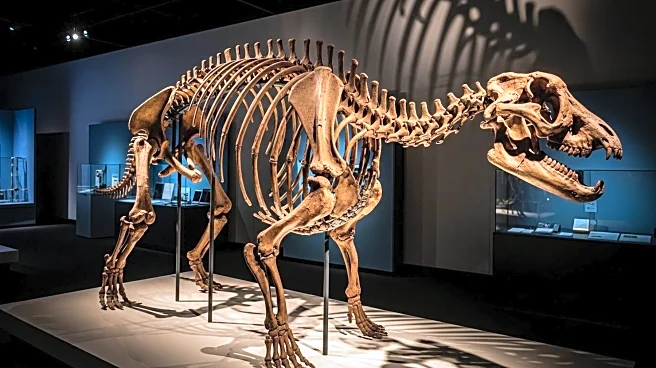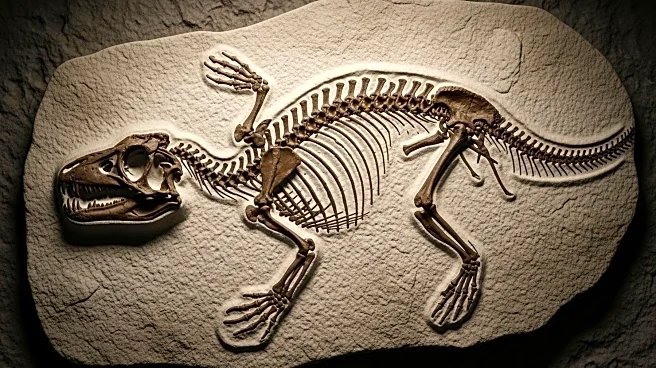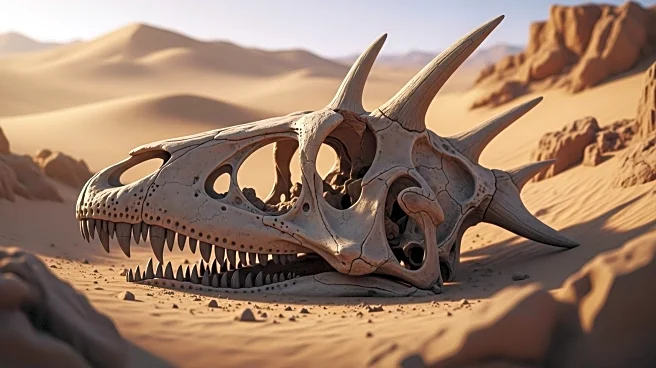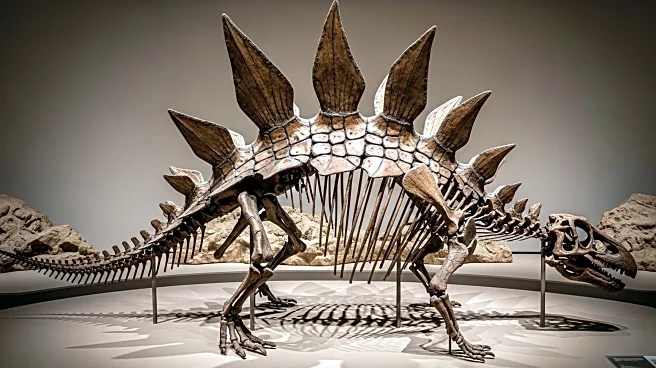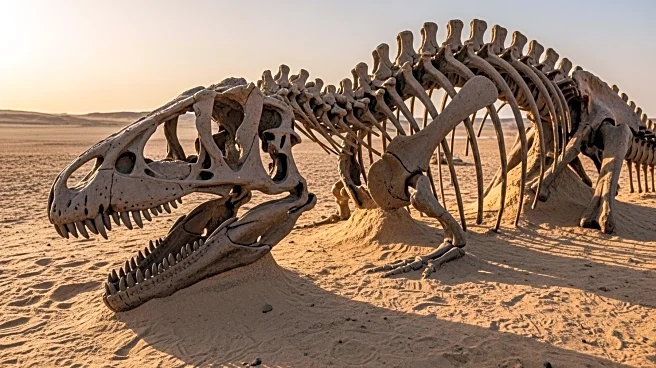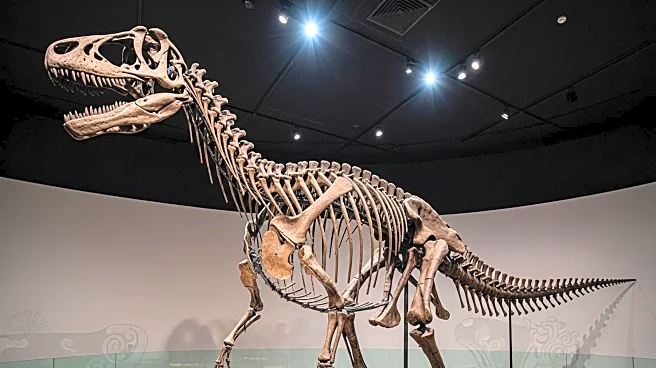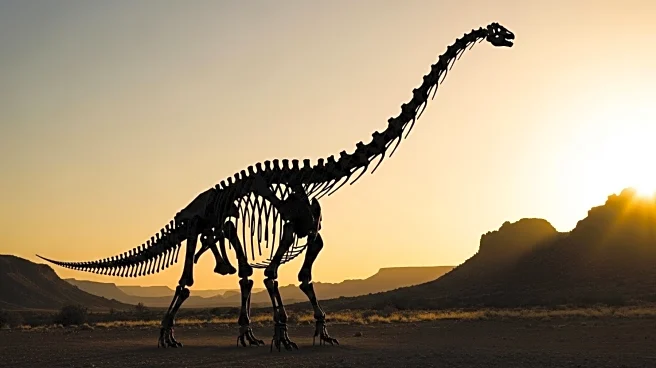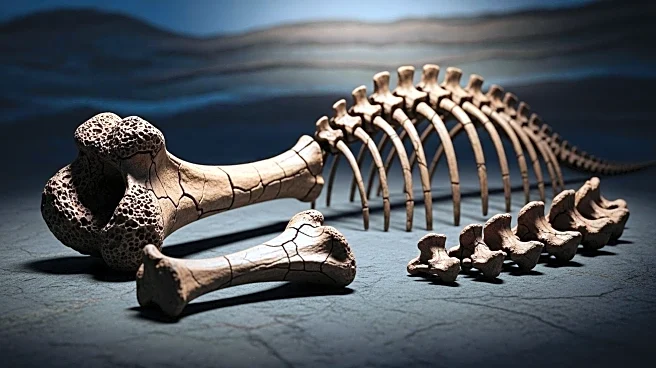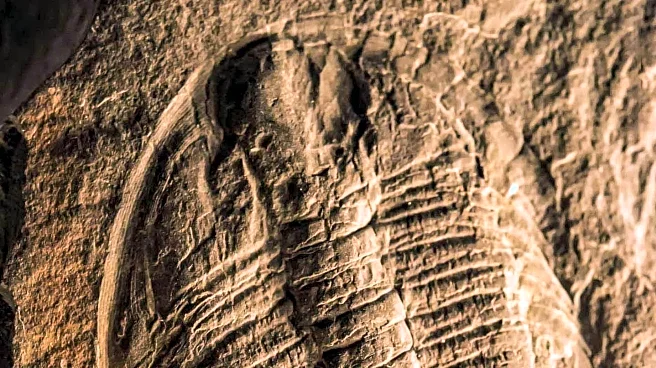What is the story about?
What's Happening?
Researchers have uncovered a dinosaur species named Spicomellus in Morocco, revealing a unique body armor structure. The Spicomellus, a four-legged herbivore about the size of a small car, was found to have a neck covered in three-foot-long spikes, a tail weapon, and bony body armor. This discovery challenges previous beliefs about ankylosaur evolution, as scientists had thought such features evolved much later during the Cretaceous period. The dinosaur's ribs were lined with fused spikes projecting outward, a feature never seen before in any vertebrate, living or extinct. The research, published in the journal Nature, highlights the complexity and diversity of the dinosaur's armor, which may have been used for both attracting mates and deterring rivals.
Why It's Important?
The discovery of Spicomellus provides new insights into the evolution of ankylosaurs, suggesting that complex armor structures developed much earlier than previously thought. This finding could reshape scientific understanding of dinosaur evolution, particularly in Africa, where the Spicomellus was found. The unique features of this dinosaur highlight the diversity of ancient life forms and underscore the importance of further paleontological research in the region. The implications extend to evolutionary biology, as researchers must reconsider the timeline and mechanisms of armor development in dinosaurs.
What's Next?
Further research is likely to focus on understanding the ecological role of Spicomellus and its interactions with other species. Scientists may conduct additional excavations in Morocco to uncover more specimens and gather data on the environment in which these dinosaurs lived. This could lead to a broader understanding of the evolutionary history of ankylosaurs and other dinosaur species in Africa. The findings may also prompt a reevaluation of existing theories on dinosaur evolution and adaptation.
Beyond the Headlines
The discovery of Spicomellus raises questions about the evolutionary pressures that led to such elaborate armor development. It suggests a complex interplay between natural selection and sexual selection, where physical traits serve multiple purposes. This could lead to new discussions on the role of aesthetics in evolution, particularly in prehistoric species. Additionally, the find emphasizes the significance of Africa's paleontological record, which may hold further surprises that could alter current scientific narratives.
AI Generated Content
Do you find this article useful?



